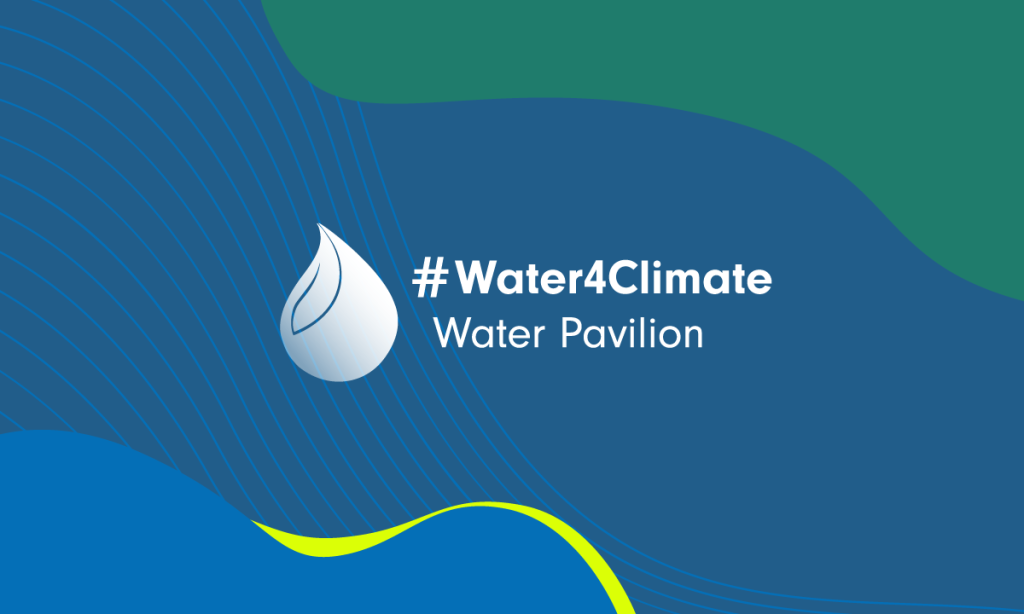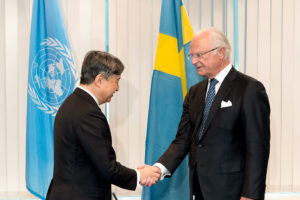What’s next for water and climate at COP28?
This year’s COP Presidency, the United Arab Emirates (UAE), has made water one of its priorities for the conference, manifested by launching a partnership on water-resilient food systems which will “support countries and non-state actors to better integrate water and food systems management for both adaptation and mitigation in national climate plans ahead of COP30.”
Where do we stand now?
The steps made in Sharm-El-Sheikh call for further action at COP28: “COP27 provided a good stepping stone for us. It allows us to call on governments and say: You all agreed that water is a vital ingredient for climate resiliency, so how can we help you to put that assertion into action?”
Those actors that want to connect water and climate policies could gain even further momentum at COP28. This year’s Presidency, the United Arab Emirates (UAE), has made water one of its priorities for the conference. This includes the launch of a partnership on water-resilient food systems, which will “support countries and non-state actors to better integrate water and food systems management for both adaptation and mitigation in national climate plans ahead of COP30.”
For Gaillard-Picher, this is part of a larger positive trend of stakeholders outside of the water sector recognizing the value of water to ensure their own needs and value chains: “The food and agriculture communities increasingly recognize that their sectors heavily depend on water security.” For COP28 she hopes that “political leadership to work across silos will emerge even more strongly so that multiple challenges can be tackled simultaneously. It is not a question of working faster but of working more impactfully.”
“We need to help countries understand how good water governance and management can help resolve their climate challenges and then integrate that into their planning processes as a political and budgetary priority.”
Importantly, next to the formal COP outcomes, there are several other layers to consider for connecting water and climate policies, such as Nationally Determined Contributions (NDCs) and National Adaptation Plans (NAPs). NDCs and NAPs are the in-country extension of countries’ climate change responses under the Paris Agreement. “We need to help countries understand how good water governance and management can help resolve their climate challenges and then integrate that into their planning processes as a political and budgetary priority. To make implementation happen, both NDCs and NAPs need to include water for climate action”, says Gaillard-Picher.
Bridging different political processes and governance levels is a challenging endeavor as “it requires a lot of holistic thinking. There may be unintended consequences for everything you do in a connected system. And so much of it is dependent on local contexts, but in any case, we know that business as usual will not get us where we need to go.” According to Gaillard-Picher, inclusive and strengthened governance will be a vital component of driving change as well as mobilizing local communities, and especially women, who support change on the ground: “SIWI has a role to play in making sure that these processes are representative and participatory and that all voices are heard.”
The Water for Climate Pavilion at COP28
One of SIWI’s main responsibilities at the climate conference is the organization of the Water for Climate Pavilion. SIWI is a founder as well as coordinator of the Pavilion and leads the steering committee on the road towards COP28. The Pavilion unites over 60 organizations, including governments, nongovernmental organizations, UN- and multilateral organizations, as well as private sector companies. UAE, the COP Presidency, has joined the Pavilion as an observer.
Key to this year’s approach is strategic outward looking engagement with a variety of political processes, sectors, and actors at the conference: “The program has been established in a way that contributes directly to UN Climate Change mechanisms and processes like the Global Stocktake, the Global Goal on Adaptation or the NDCs.” This means that the partners will be building relationships and engaging in opportunities throughout the conference more than has previously been the case: “We encouraged our partners to go into other spaces, to break out of the water bubble. People that are part of the Water for Climate Pavilion might not actually spend much time in it on site because they are attending events in other Pavilions or Committees, bringing water into those other conversations to a greater extent.”
Joint messaging is another key feature of the Water for Climate Pavilion: “The organizations within the Water for Climate Pavilion have aligned their messages to make the same call across all our networks and speak with one voice for water.” Finding the right tone at climate conferences is important: “We need to learn the language of other sectors while adjusting our waterspeak in a way that can be understood and integrated by other stakeholders. We need to signal that we are not here just to broadcast our messages because we want something from them, but that we are here to help others fulfill their goals through our shared knowledge.”
The Pavilion has its own webpage which contains a knowledge hub: “Many of us do not have direct access to the negotiation space, but our government partners do. In the knowledge hub we have gathered a wealth of information to demonstrate why water needs to be a priority. Our partners and their partners can use these within the formal negotiation spaces.” Gaillard-Picher emphasizes: “We want to support parties to be vocal about water.”










